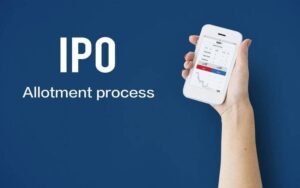Automated Prospecting: What Is It?
Automated prospecting greatly expedites sales by using cutting-edge technology to locate and connect with new clients. This cutting-edge method uses various digital tools and techniques to automate prospecting duties previously completed by hand, like finding leads, making contact, and developing new customers.
Automated prospecting uses data analytics, artificial intelligence (AI), and other digital technologies to streamline and accelerate the process, unlike traditional sales prospecting, which frequently entails cold calling and manual lead generation. This change improves productivity and sharpens the focus on prospective customers.
Synonyms:
- digital lead generation
- automated lead management
- AI-assisted prospecting
The Value of Computerized Prospecting
Automated prospecting has entirely changed modern sales methods, which is essential for increasing lead creation and productivity. Sales teams may focus on more value-added interactions and the critical goal of closing deals by automating routine and manual operations. This frees up time spent on these activities.
This method guarantees a more targeted and individualized approach to potential clients while streamlining the prospecting process. The primary benefit of automated prospecting is its ability to process and evaluate large amounts of data quickly. This functionality ensures that sales efforts are focused on the most qualified prospects by enabling more accurate targeting and efficient lead qualification. As a result, companies see a notable increase in productivity and a better success rate in their sales funnels.
How to Make Prospecting Automated
Integrating different technologies, including email automation tools, AI-driven analytics platforms, and CRM systems, is necessary for effective sales automation. The prospecting process is more efficient thanks to these integrations, which unite the system.
Automated prospecting can significantly improve the efficient and accurate targeting of potential clients. A methodical strategy is necessary to optimize this technology’s advantages.
- Identify Target Market: Precisely determining your target market is the first stage in automated prospecting. To do this, use data analytics to build the perfect consumer profile. Businesses can identify traits by examining past sales data, market trends, and consumer feedback, including demographic information, purchasing patterns, and preferences. Thanks to this data-driven method, your prospecting efforts will be concentrated on the most pertinent and possibly profitable market groups.
- Choose Automation Instruments: Selecting the appropriate tools for sales automation is essential. Your chosen software should align with your unique sales goals and work harmoniously with your current Customer Relationship Management (CRM) setup. Seek solutions with analytics, automated communications, and lead tracking. Integrating your CRM system is essential since it guarantees the centralization of all customer interactions and data, offering a thorough perspective of each prospect’s path.
- Establish Lead Scoring: Use algorithms to implement a lead scoring system. Prospects are ranked according to their likelihood of conversion by this algorithm, which considers their engagement level, demographic fit, and website behavior. Sales teams can concentrate on leads with the highest conversion potential by using lead scoring, which automates the prioritization process.
- Automate First Contact: Use scheduling applications and email templates to automatically make the first contact with prospects. These resources can support message personalization while preserving productivity and guaranteeing prompt, reliable communication. By providing leads with pertinent material, automated email campaigns can help them progressively move through the sales funnel.
- Observe and improve: Finally, regularly monitor the performance of your automated prospecting activities. Examine the open, click-through, conversion, and overall return on investment rates. Based on these observations, adjust your scoring criteria, templates, and strategies. Optimizing the efficacy of your automated prospecting system requires regular tweaks based on performance data.
Automated Email Prospecting
Automated email prospecting uses technology-driven, strategic communication to increase interaction with new clients. Effective email outreach strategies and best practices include personalizing messaging, utilizing scheduling tools and templates, and providing prominent calls to action in every message.
Templates for emails
Automated prospecting requires customizable email templates. These must be flexible enough to fit different market niches. For example, a template intended for senior executives would promote growth and dependability, while one intended for young professionals might emphasize creativity. The goal is to have a base template that is easily customizable with segment-specific information, enabling customization without creating completely new emails for every prospect.
Tools for Scheduling
Their timing significantly influences the efficacy of emails. The possibility of interaction rises when email sequences are sent at the correct times, thanks to scheduling technologies. These systems can, for instance, automatically send follow-up emails a few days after the first communication or deliver messages at periods when inbox checking is at its highest, such as during lunch or early morning. Thanks to strategic scheduling, the marketing team’s prospect lists are communicated on time and consistently.
Individualization
Personalized information should be tailored to the recipient’s unique job title, interests, and business needs and addressed by name. This could entail mentioning the most recent accomplishments of their business, pertinent market trends, or prior dealings. The content can highlight how your product or service improves patient care or complies with healthcare regulations for a prospect in the healthcare sector.
Unambiguous Call to Action (CTA)
Each email must have a clear call to action (CTA) that directs the prospect to the next stage. Whether the call to action is to schedule a call, register for a webinar, or download a white paper, it should be straightforward to find. For instance, a “Book Your Demo Today” button at the end of an email seeking to arrange a product demo may take the recipient straight to a scheduling page.
Techniques for Successful Automated Prospecting
Smart technology and customized integration are essential components of automated prospecting methods for finding and connecting potential customers.
Targeting Based on Data
Using analytics for data-driven targeting is the cornerstone of successful automated prospecting. Finding patterns and trends in customer data analysis facilitates the identification of high-value leads. Businesses that know which demographic groups have the highest conversion rates can concentrate their efforts more efficiently. This data-centric approach maximizes return on investment by focusing resources on prospects with the best conversion potential.
Individualization
Sales automation tools streamline processes, but building rapport with prospects requires adding a human touch to automated messages. As previously said, customization can range from something as basic as utilizing the prospect’s name to something more intricate, like adjusting messages according to previous exchanges or hobbies. Customization increases the relevance and engagement of communication and raises the likelihood of a favorable reaction.
Ongoing Optimization
Automated prospecting requires ongoing assessment and modification to be successful. This could entail changing lead scoring criteria, email templates, or client segmentation tactics. By refining these components in light of performance data, the prospecting process will continue to be successful and efficient while adjusting to shifting customer demands and market dynamics.
By applying these tactics, companies can effectively connect with and involve prospective customers, augmenting their marketing endeavors in the contemporary digital market.
Difficulties with Computerized Prospecting
Even if it’s innovative for improving sales processes, automated prospecting has drawbacks. Businesses must recognize and solve these issues in order to fully utilize automation in their sales cycles.
Typical Barriers
Harmonizing Automation and Customization
Striking the correct balance between automation and personalization is one of the main issues with automated prospecting. Automation is efficient but frequently lacks the human element needed to establish rapport with potential customers. Excessive dependence on automation may result in generic interactions that alienate prospective customers.
Ensuring Regulation Compliance and Data Privacy
Data privacy laws and regulations are essential because automated systems use more consumer data. To stay out of legal hot water and keep customers’ trust, businesses must traverse complicated legal frameworks like the CCPA and GDPR. They must make sure that their prospecting operations comply with these requirements.
Preserving the Genuineness of Conversations
It’s hard to keep relationships genuine in the digital age when consumers are inundated with commercial messages. Prospects are looking for genuine relationships, and automated messaging can sometimes come across as irrelevant or impersonal, which lessens its impact.
Overcoming Obstacles
Using Cutting-Edge AI for Customization
Advances in AI technology are being increasingly utilized by businesses to achieve a balance between automation and customization. To provide more relevant and personalized communication, AI may evaluate client data to identify preferences and habits. AI algorithms can customize email content, for instance, according to a prospect’s expressed preferences or past experiences with the business, which adds a more personalized touch to every communication.
Respecting Ethical Guidelines and Data Protection Laws
Ensuring adherence to data protection regulations is crucial. Companies need to implement robust data governance procedures, including getting express consent for data collection and usage, guaranteeing data accuracy, and guarding against illegal access. The use of consumer data in automated systems should be guided by ethical principles that protect privacy and refrain from invasive or deceptive tactics.
Continually Adding to and Improving Automated Messages
It’s critical to continuously update and improve messaging strategies to ensure they correspond with the prospect’s stage in the customer journey and preserve the authenticity of automated interactions. This entails reviewing and editing email templates, updating wording in response to feedback and consumer interaction statistics, and ensuring that the language and tone stay authentic and relatable. Regular automated content audits can be used to find areas where messages may have become old or where customization can be improved.
Prospecting Automation is Changing Sales
Automated prospecting has become a game-changing tool in sales, bringing about a significant shift in lead generation toward accuracy and efficiency. Automating and optimizing procedures has wholly changed conventional sales approaches and resulted in more precise targeting and effective client engagement. One cannot stress how important it is for organizations to embrace and integrate these changing practices as they continue to operate in an increasingly digital environment. Implementing cutting-edge automated prospecting strategies and technology is crucial for maintaining a competitive edge in the industry.
According to predicted trends in automated prospecting, prospects will become more accurate and productive by deploying increasingly advanced AI applications. A more thorough interface with CRM systems will probably result from this advancement, making it possible to manage client interactions and sales activities more seamlessly and comprehensively. Furthermore, it will be crucial to innovate personalization strategies constantly. With the advancement of AI and machine learning technology, automated communications will become more efficient and exciting, allowing for ever more relevant and customized interactions with potential customers. The criteria and expectations of successful sales tactics are about to be redefined by the continuous advancement of automated prospecting approaches and technologies.




















































